Various installations: Paintings on wood panels, augmented-reality wallpapers, 3D animation + audio installation with Queen Elizabeth bot
In 2021, a high-profile NFT platform invited Hart to create a game that they intended to auction as interactive tokens. She worked on the game mechanics, animations, and 3d images for nine months. Right before the planned release date, the platform shut down - bankrupt! Hart took the collapse as an opportunity, and instead of an on-line gambling game intended as a critique of crypto-culture, she produced paintings using the same visuals and in the course of this, produced a hybrid form where the virtual and the tangible are fluidly mixed. She calls these works “ghost” paintings.
Her technique is to start each work by hand-painting mosaic patterns appropriated from the historical architecture of failed empires. She then builds a 3D computer model of a still life in a 3D simulated setting, framed in a shallow game space. Inside this game world, she uses a virtual-reality painting software to improvise gestural painting on the polygon models in the 3D setting, using a sophisticated water-color simulator. She then layers in other photographs - of handmade, tangible paintings - produced on an underlayer, made with traditional gouache paint.
Through her layering, Hart’s paintings have an uncanny sense of being both ancient and high-tech at the same time, with pentimento traces created using different techniques produced in different eras. Hart layers the traditional and the futurist, moving backwards and forwards in time in the same objects, which are then mounted on Russian Roulette augmented-reality wallpaper (2023). The wallpaper deploys the heraldry of collapsed empires: logos of USA tech corporations and bankrupt crypto currencies. These symbols act like QR codes, triggering Hart’s Russian Roulette app. Through the app one can see animations taken from The Art of Survival: Aphorisms by an Old Girl, a series of Mp4 movies, enacted by an open-source “Queen Elizabeth'' bot. Russian Roulette is liminal: an allegorical Satan’s brew but here filled with irony and humor.
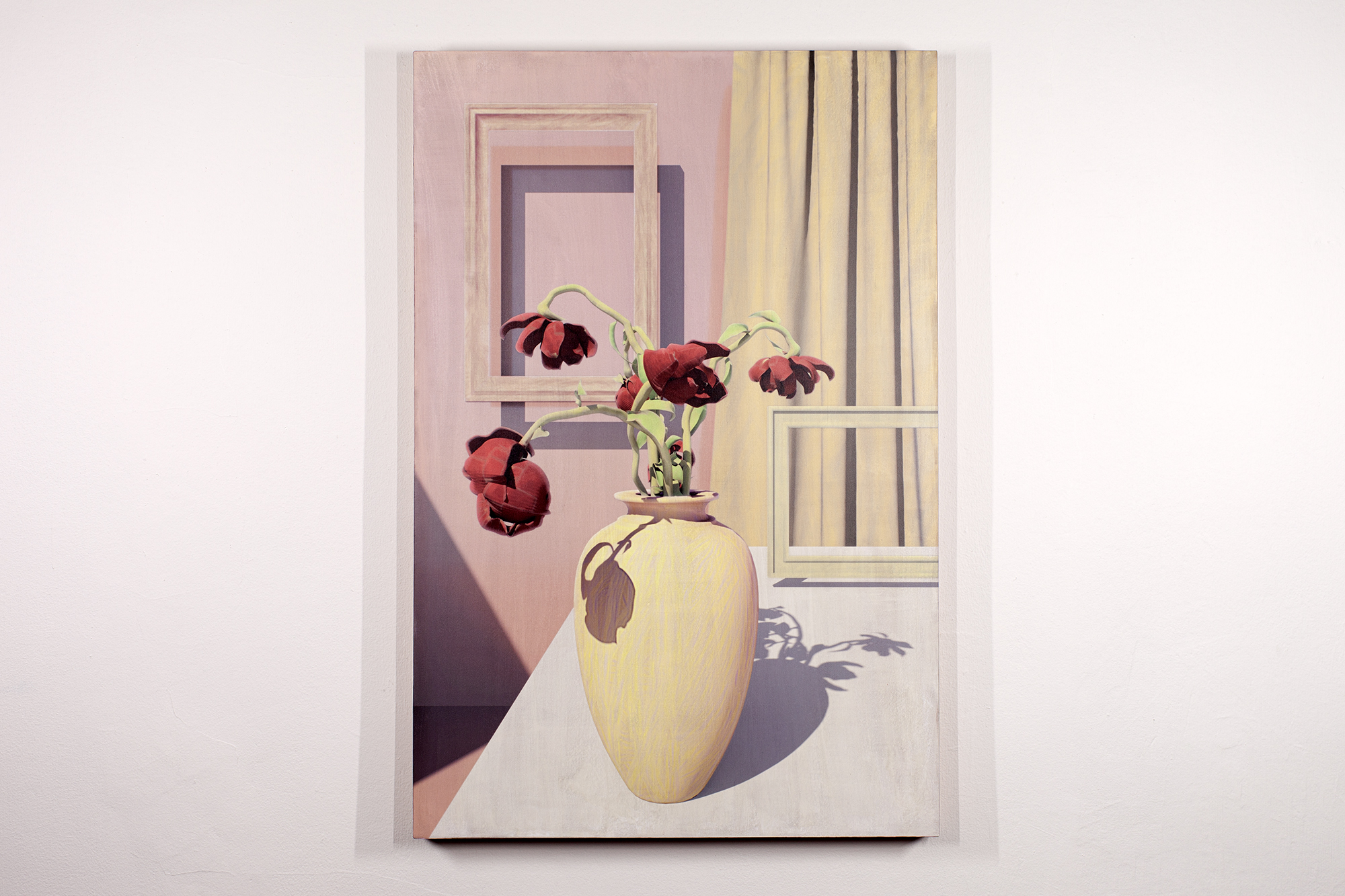


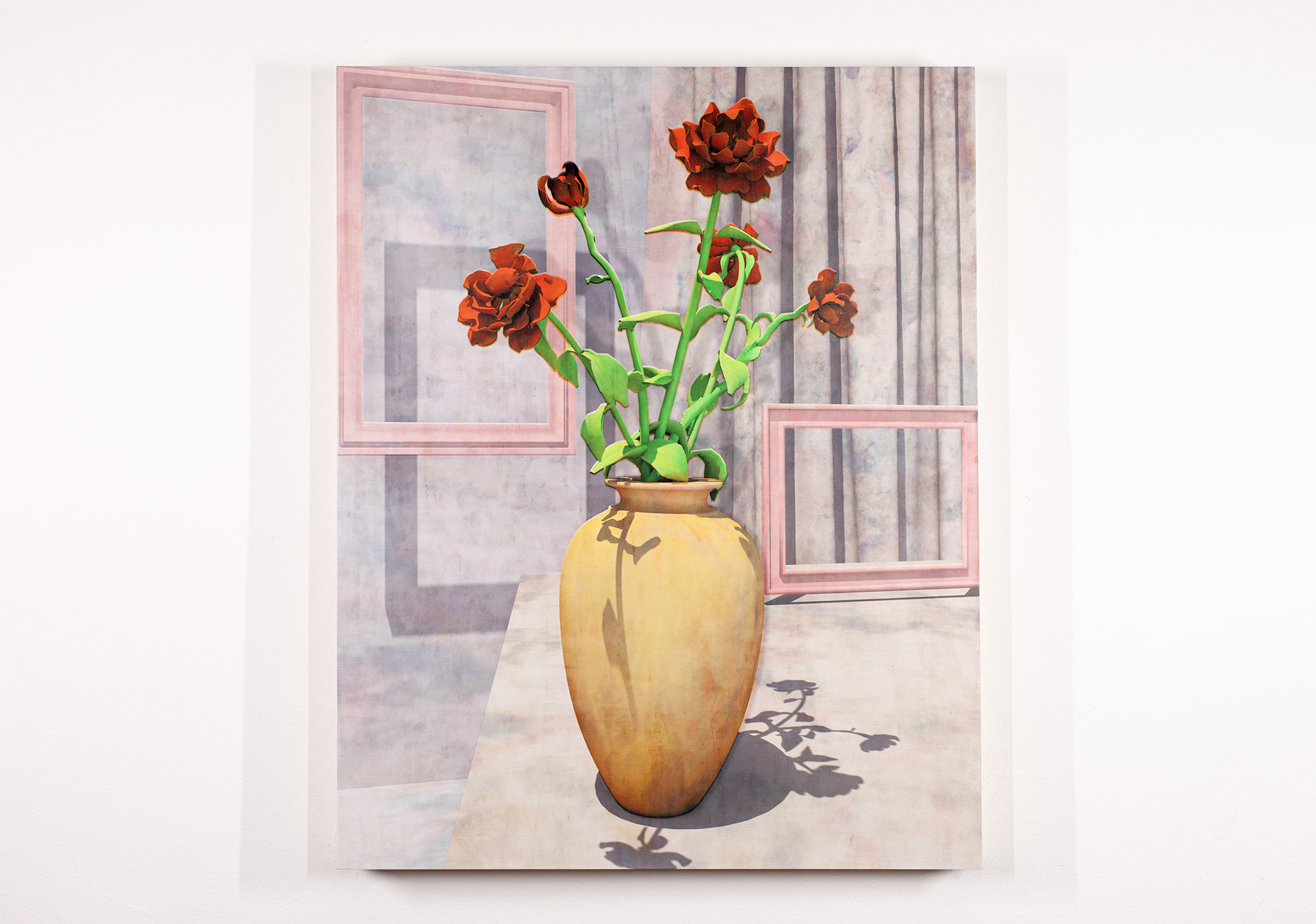

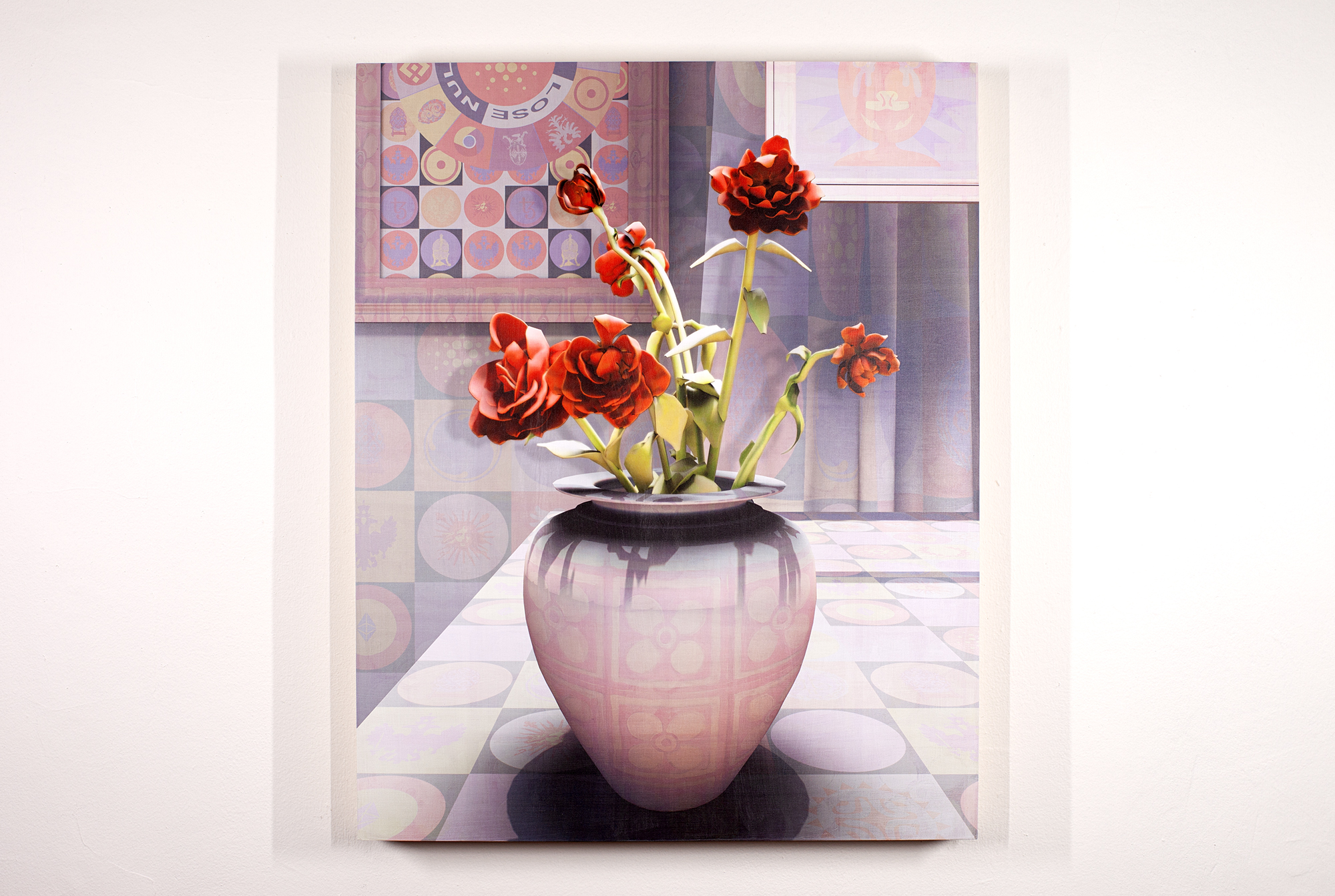
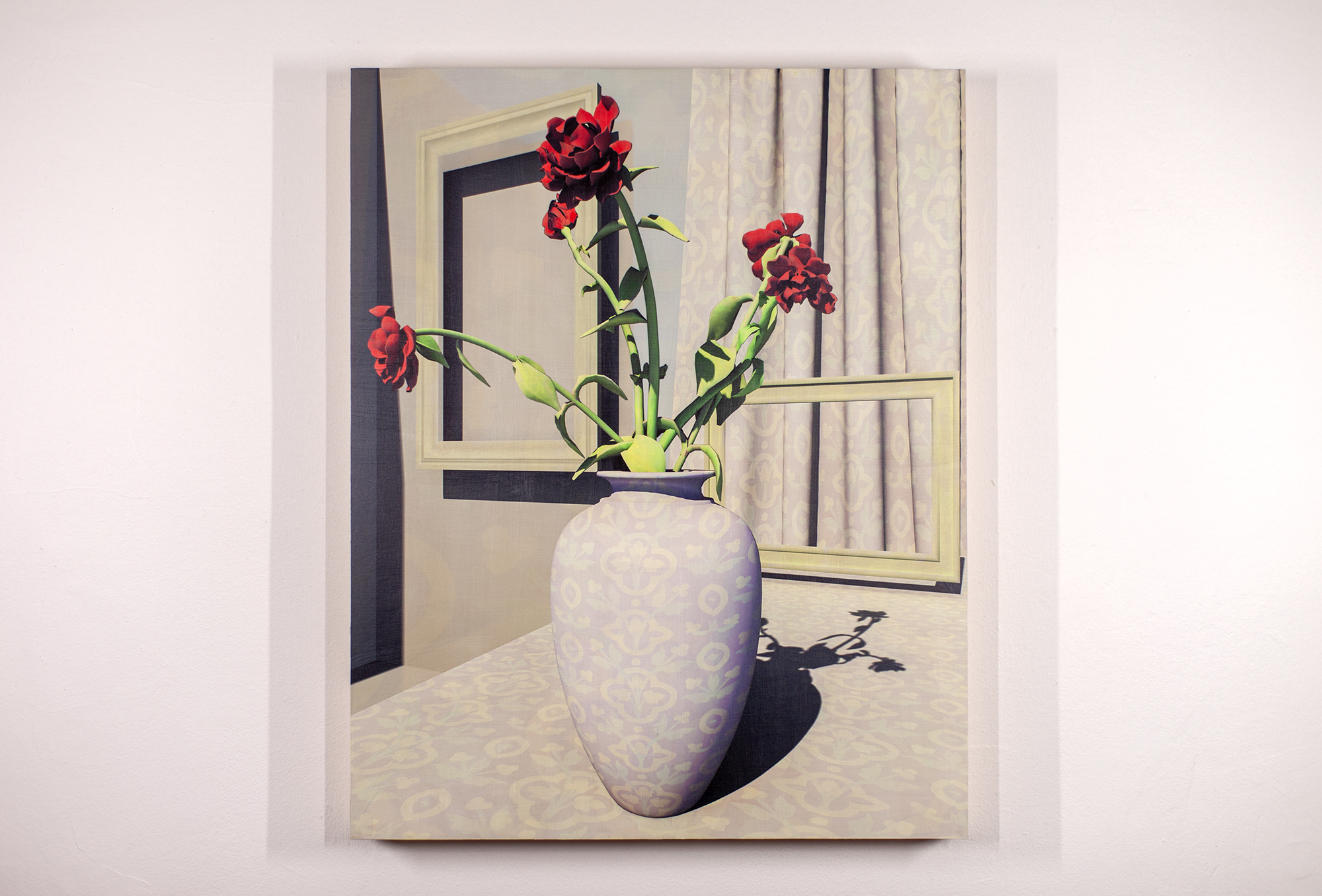
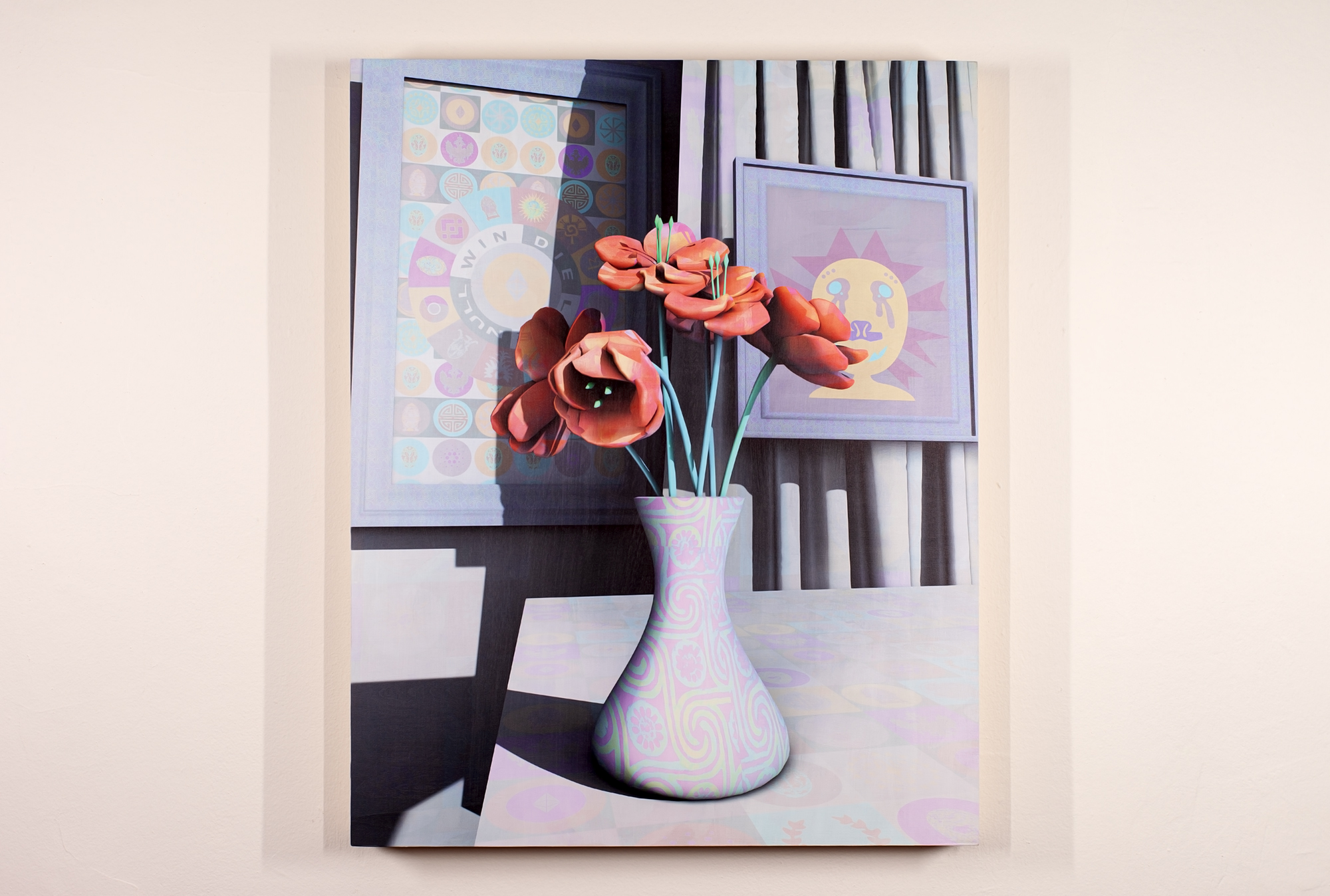

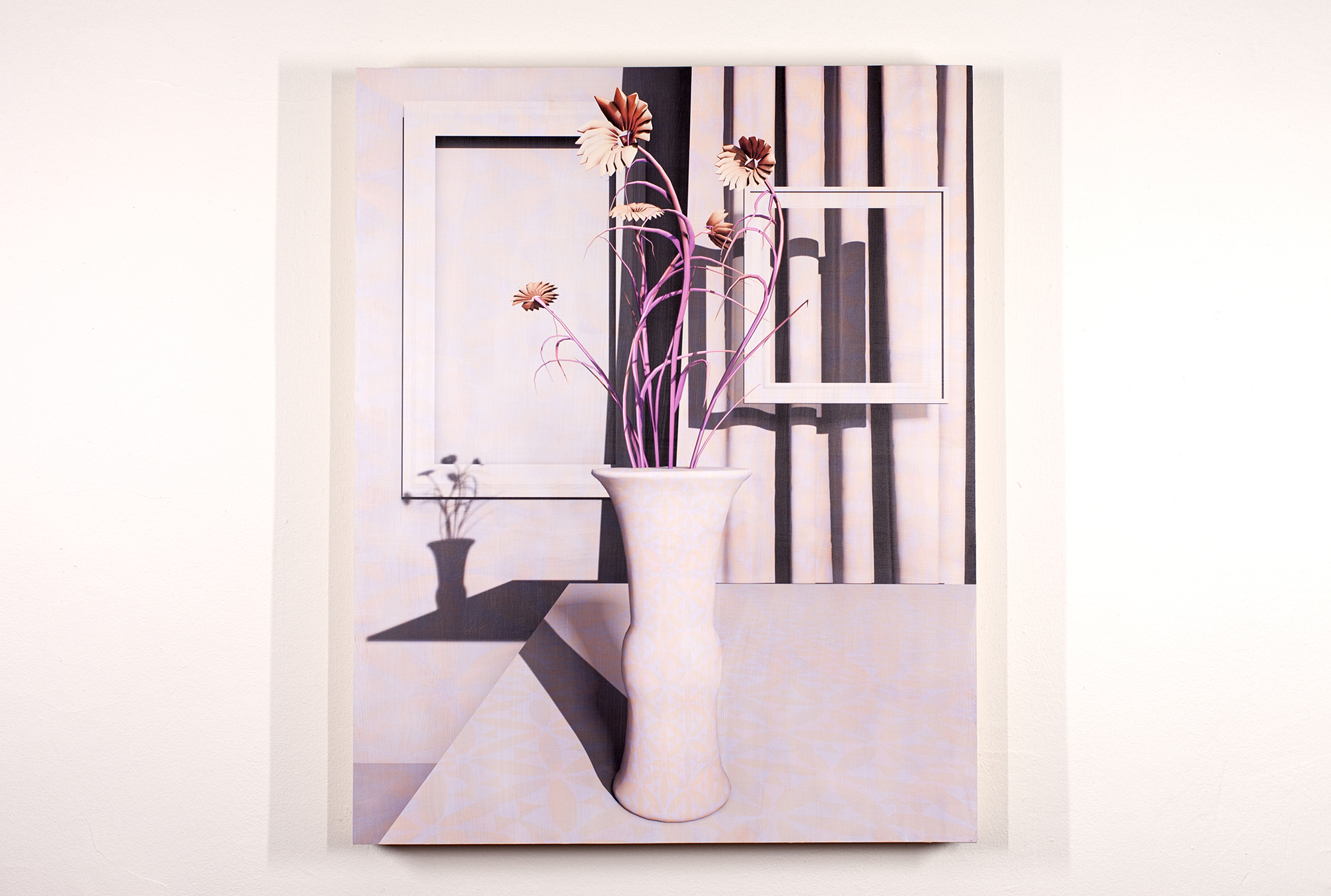
The Ruins (2019-2025)
Paintings on wood panels, augmented-reality wallpaper
The Ruins implements still lifes, the classical form of a memento mori, to contemplate the decay of western civilization. In this work, Hart revises the canons of modernist painting and the manifestos of failed utopias. The piece is a meditation on the flow of history, expressed as a cycle of decay and regeneration.
The Ruins is an antidote to a world in crisis, navigating from a Eurocentric paradigm of fixed photographic capture into a reality of malleable and inherently unstable computer simulations and systemic collapse. It presents a different notion of time, a present that viewers experience through the possibility of simulation technologies that use scientific data to model natural forces, the crystallization of past, future and present into a perpetual now. Hart’s interpretation of still lifes are based on low resolution polygon models that she crafts in as 3D-computer graphics. These models, hearkening to the idea of a poor copy or image popularized by Hito Steryl, are computer-made replications of copyright-protected paintings. Taken from works by Matisse and Picasso, patriarchs of the Modernist canon, these forms cover The Ruins in flirtatious copyright infringement.







